Flowers That Love Hot Summers: Top Ten Picks
Looking for flowers that will survive a hot summer like the ones we get in Arizona? Some blooms are made for it. These heat-tolerant annuals bring color, life, and joy to the garden, even during the hottest days of summer.
The key is choosing the right varieties and planting them at the right time. Many traditional summer flowers struggle in extreme heat, especially in hot-climate regions like the low desert of Arizona.
These are my go-to flowers for hot summers. They’re tough, reliable, and bloom beautifully even as the temperatures climb. Every photo in this post is from my own summer garden here in Arizona. I’ve included planting tips and timing tailored specifically for low-desert gardeners.
Want help growing flowers all year long? My Flower Planting Guide includes timing, spacing, and growing tips for each season so you’ll always know what to plant and when—no matter the weather.
Flowers that Love The Heat #1 Zinnias: (Zinnia elegans)
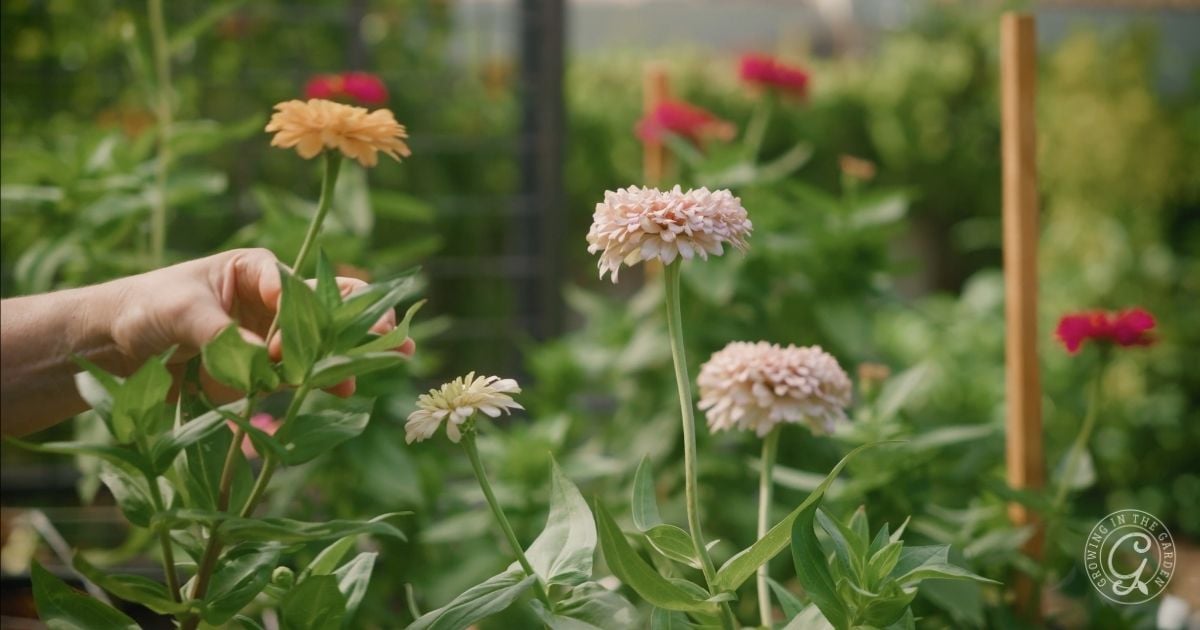
How to plant zinnias
- Plant in full to part sun in soil amended with compost
- Zinnias do best when started from seed or transplanted into the garden when very young.
- Does not require additional feeding
When to plant zinnias
- Start seeds indoors from February through May for an early start
- Plant from seed or transplant outside from March through July
- Blooms from April to November
Tips for growing zinnias
- Needs regular watering
- Leaves do not like getting wet; they will burn
- Remove spent flowers to encourage production
Good to know
- Easy to grow
- Attracts bees, butterflies, hummingbirds, and beneficial insects
- Makes an excellent cut flower
- Try several different varieties
This article provides additional information on how to grow zinnias.
Flowers that Love Hot Summers #2: Globe Amaranth (Gomphrena globose)
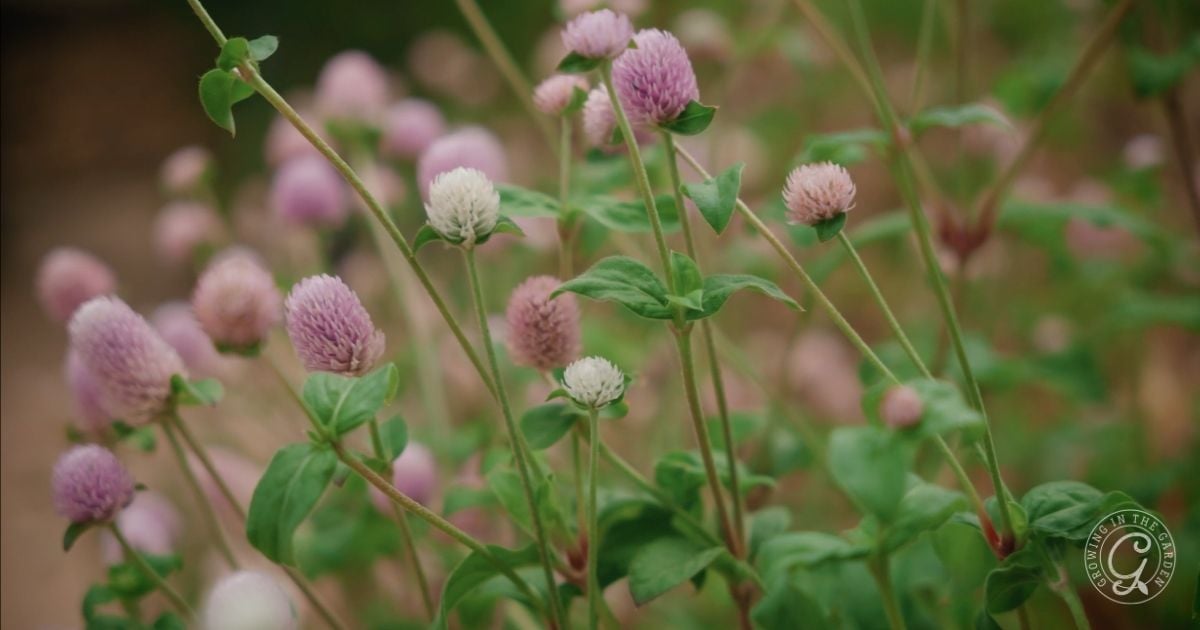
How to plant globe amaranth
- Plant in full sun to part sun
- Plant globe amaranth from seed or starts
- Space rows 6″-12″ apart
When to plant globe amaranth
- Start indoors from seed from January through May
- Plant transplants outside from March through the middle of July
- Blooms from April to October
Tips for growing globe amaranth
- Grows well in containers
- Very heat tolerant
- Tolerates full sun, drought, and neglect
Good to know
- Attracts bees, butterflies, hummingbirds, and beneficial insects
- Good for dried arrangements
- Once dried, it remains the same color
This article provides additional information on how to grow gomphrena.

The Perpetual Annual Flower Planting Calendar, available in my shop, helps you learn when to plant flowers in the low desert of Arizona and whether to plant seeds or transplants.
Flowers that Love Hot Summers #3: Vinca (Periwinkle)
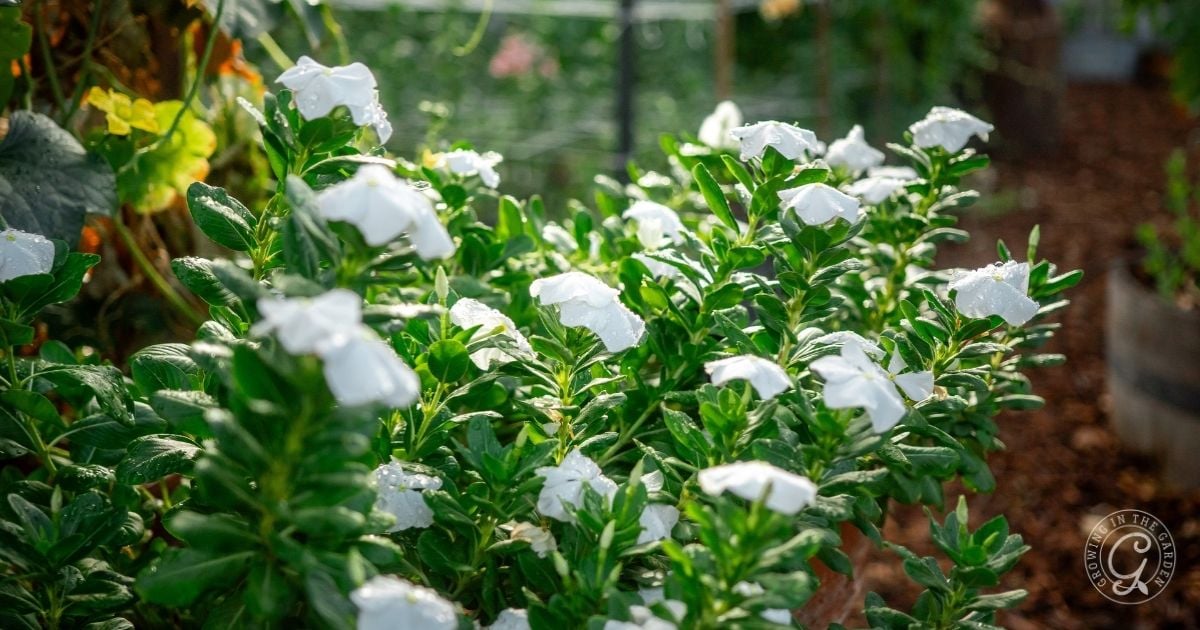
How to plant vinca
- Plant in areas with full sun to shade
- Space plants 12″-15″ apart
- Vinca is typically planted from transplant
When to plant vinca
- Start seeds indoors from January through May
- Plant transplants outside from March through July
- Blooms from April through October
Tips for growing vinca
- Pinch blooms for fuller plants
- Needs regular water
- If plant dries out, water it well and it may recover
Good to know
- Reseeds easily
- Plant trailing varieties in containers
- Abundant blooms
- Tolerates neglect
This article provides additional information on how to grow vinca.
Flowers that Love Hot Summers #4: Sunflowers
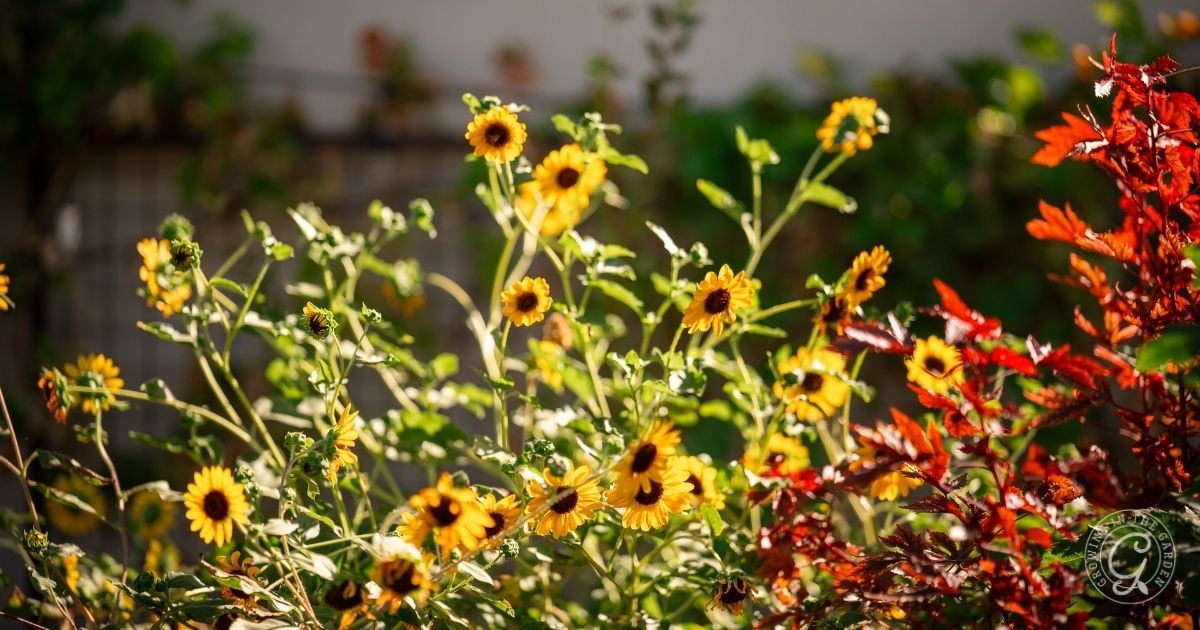
How to plant sunflowers
- Space small blooms 6″ apart, the largest blooms need 3′
- Likes full sun
- Sow sunflower seeds directly into the soil
When to plant sunflowers
- Plant seeds outside from February through August
- Blooms from April through October
Tips for growing sunflowers
- Tolerates poor soil, but better soil = better blooms
- Smaller-sized blooms can be grown in containers
- Look for branching varieties and single-stem varieties
Good to know
- Makes a great trellis for other plants
- Attracts birds and other wildlife
- Edible seeds
- Excellent cut flower
This article provides additional information on growing sunflowers.
Hot Summer Flower #5: Lisianthus
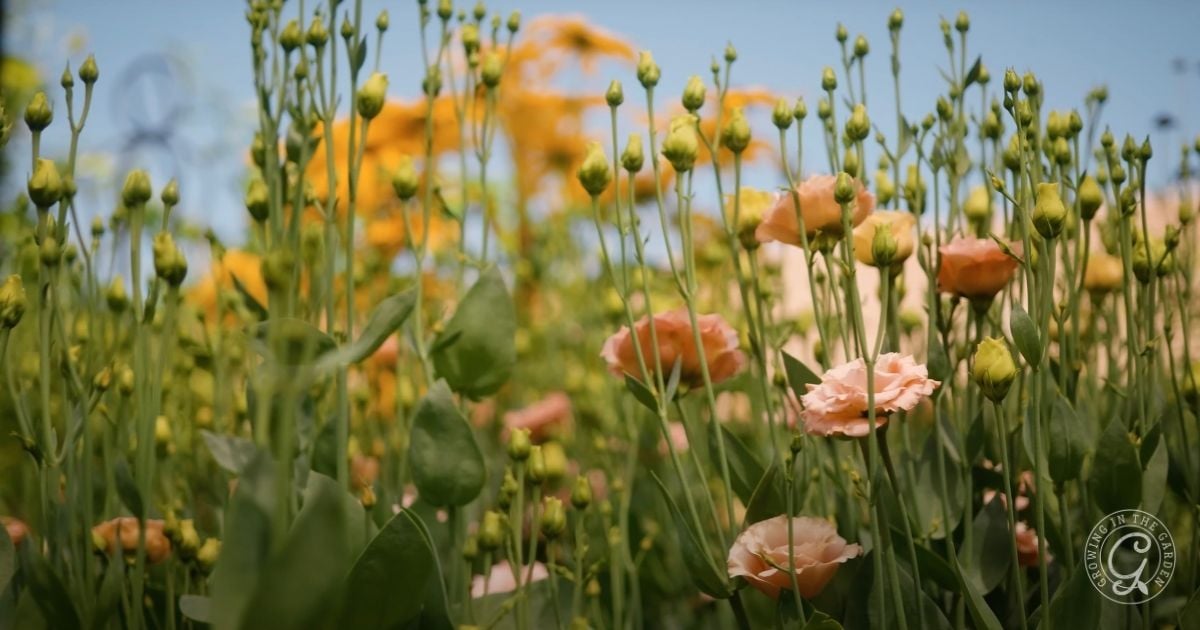
How to plant Lisianthus
- Buy transplants or plugs; seeds can be very challenging to grow from.
- Likes full sun; afternoon shade is ok in hot climates
When to plant Lisianthus
- Plant transplants outside from February through May
- Flowers from May through November
Tips for growing lisianthus
- Tall plants may need support
- After the first flush of blooms, cut the stems back all the way to the rosette.
- Planting it early in the season gives lisianthus plenty of time to become established before the summer heat in hot climate areas.
Good to know
- Lisianthus prefers moist but not soggy soil.
- Lisianthus benefits from rich soil and regular feeding from a flower fertilizer.
- Shorter varieties can be grown in containers
This article provides additional information on growing lisianthus.
Heat-Loving Flower #6: Blue Salvia
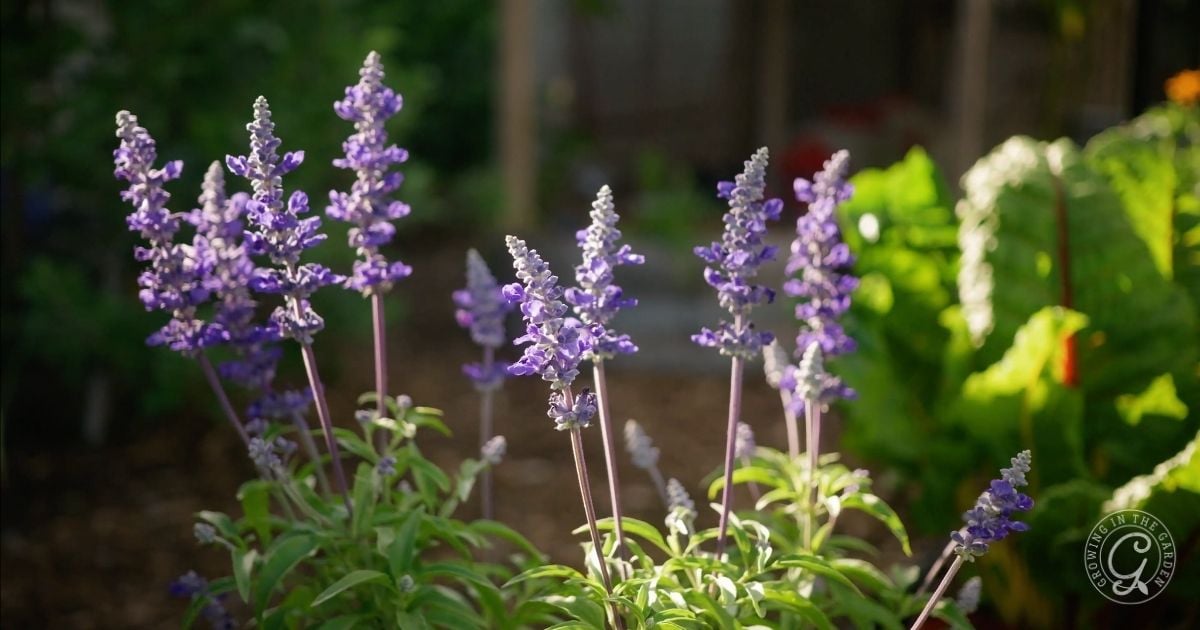
How to plant blue salvia
- Plant in flower beds and containers, and along borders
- Plant from transplants
When to plant blue salvia
- Start seeds indoors from July through August and January through March
- Plant transplants outside from September 15 through October and again from March through May
- Blooms from April through December
Tips for growing blue salvia
- Let blue salvia dry out between waterings
- Cut back spent blooms to encourage more blooms
Good to know
- Drought tolerant
- Blooms all summer long
- Attracts butterflies and hummingbirds
- Reseeds easily
- Dies back in frost but often returns – cut back in spring
Hot Summer Flower #7: Red Salvia
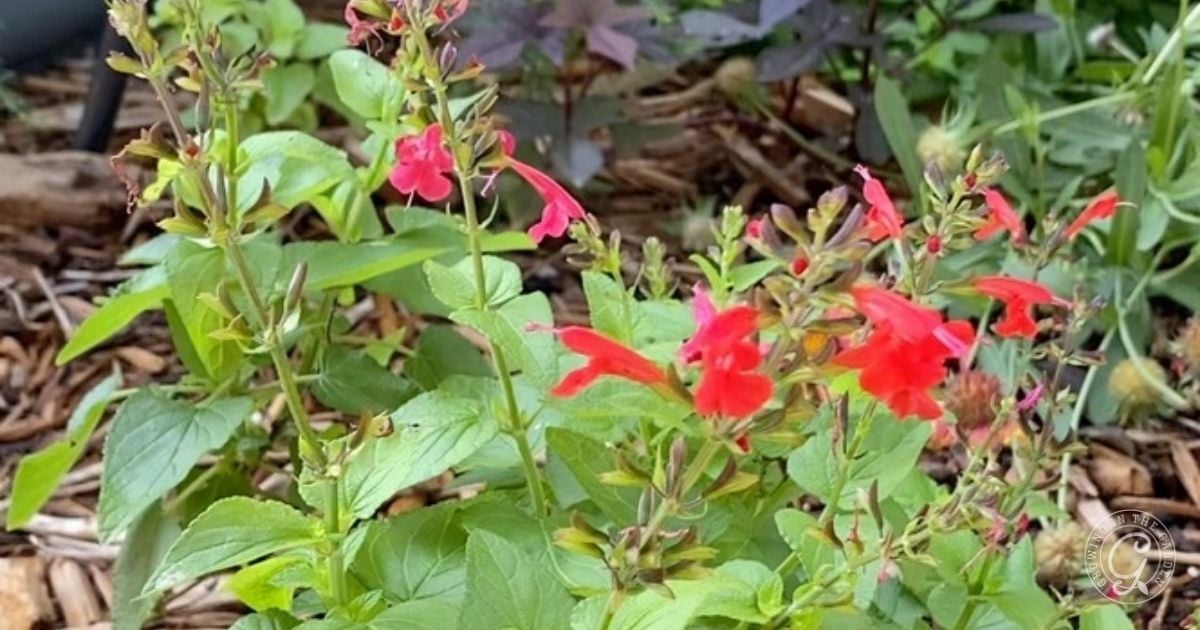
How to plant red salvia
- Red Salvia prefers afternoon shade in the heat of the summer
- Plant in flower beds and containers, and along borders
- Plant from transplants
When to plant red salvia
- Start seeds indoors from August through September and January through March
- Plant transplants outside from September 15 through October and March through May
- Blooms from April through December
Tips for growing red salvia
- Let red salvia dry out a little between waterings
- Cut back spent blooms to encourage branching and more blooms
Good to know
- Drought tolerant
- Blooms all summer long
- Attracts butterflies and hummingbirds
- Reseeds easily
- Dies back in frost but often returns – cut back in spring
Hot Summer Flower #8: Black-Eyed Susan (Rudbeckia)
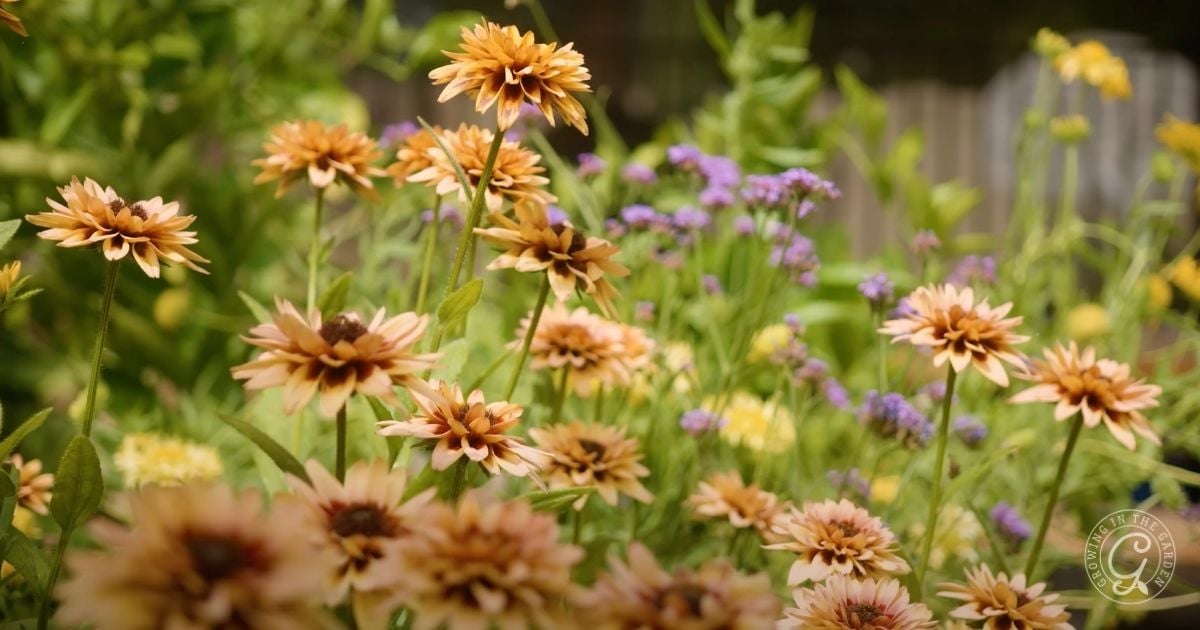
How to plant rudbeckia
- Prefers afternoon shade
- Blooms all summer long
- Attracts butterflies and hummingbirds
- Reseeds easily
- Dies back in the frost but often returns – cut back in spring
When to plant rudbeckia
- Start seeds indoors from August through January
- Plant seeds or transplants outside from October through March
- Blooms June through October
Tips for growing rudbeckia
- Deadhead often during the season to encourage blooms
- Leave blooms on the plant and the end of the season to reseed, or remove spent blooms if you don’t want the plant to spread
- Shorter varieties grow well in containers
Good to know
- Avoid overhead watering to prevent mildew
- Thin seedlings to about a foot apart
This article provides additional information on how to grow rudbeckia.
Heat-Loving Flower #9: Angelonia (Summer Snapdragon)
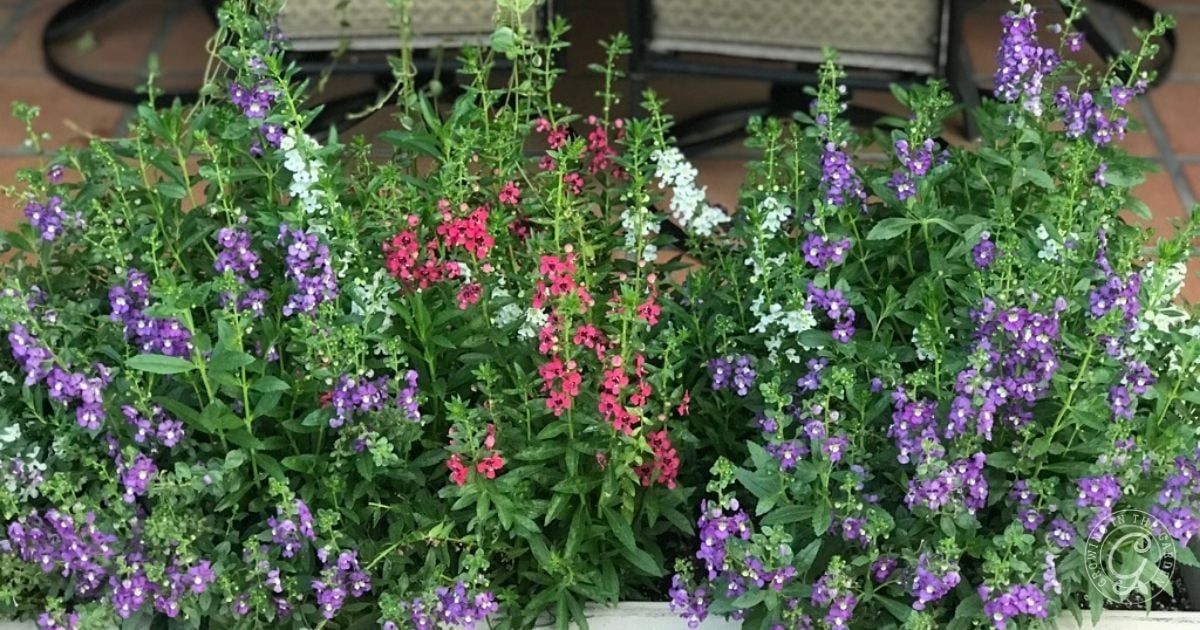
How to plant angelonia
- Typically planted from transplant
- Prefers hot, sunny summer locations
- Likes moist, well-drained soil
- Plant in flowerbeds, borders, and containers
- Allow 1′-2′ between plants
When to plant angelonia
- Plant transplants outside after the danger of frost has passed (March – July)
- Blooms all summer long
- Possible to grow year-round
Tips for growing angelonia
- Grows well in containers
- Likes occasional feedings with an all-purpose fertilizer
- Cut back dead or dying stems to encourage blooms
- Cover if there is a danger of frost
Good to know
- Tolerates brief dry spells
- Flowers all summer long
- Attracts butterflies and bees
- Low-maintenance
- It comes in several colors
- It can be grown from seeds or cuttings
Heat-Loving Flower #10: Four O’Clocks
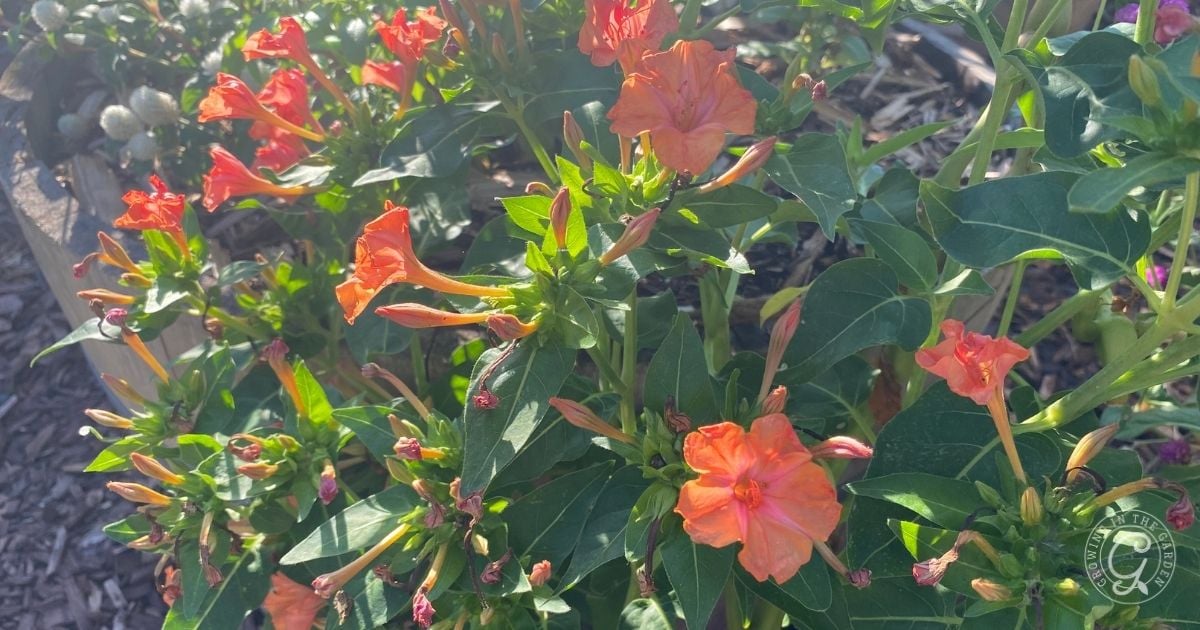
How to plant four o’clocks
- Does best started from seed
- Tolerates full sun, also grows in partial shade
- Excellent border flower, and in containers
When to plant four o’clocks
- Plant seeds outside from March through June
- Blooms from July through November
Tips for growing four o’clocks
- Feeding throughout the growing season will encourage more blooms, but isn’t necessary
- Reseeds easily and comes back year after year
- Collect and save seeds
Good to know
- May attract squash bugs
- All parts of the plant (including seeds) are toxic
This article shares more information about how to grow four o’clocks.
Looking for more ideas? Other hot weather-tolerant bloomers include:
Summer Balsam, Basil, Begonia, Celosia, Coleus, Coreopsis, Cosmos, Dahlias, Desert Marigold, Desert Milkweed, Gaillardia, Impatiens, Mexican Hat, Portulaca, Purslane, Sage, Statice, Strawflower, Tithonia (Mexican Sunflower), Verbena, Wild Hyssop









Are you ready to plant summer flowers? Check out what to plant in June in Arizona, including heat-tolerant flowers for more ideas.
Want more ideas for summer gardening in hot climates?
If you’re looking to add even more beauty and resilience to your garden, these resources will help you choose the right flowers and vegetables—and give you the tools to help them thrive in the heat:
- Arizona Annual Flowers: Visual Guide
- Vegetables That Love Hot Summers (and How to Grow Them)
- 10 Ways to Prepare Your Hot-Climate Garden for Summer
- 10 Ways to Help Your Garden Survive the Summer Heat
- Summer Gardening in Arizona: What You Need to Know
- Surviving a Heatwave: Gardening in High Heat
Whether you’re planting heat-tolerant flowers, choosing vegetables that thrive in hot summers, or getting your garden ready for triple-digit days, these posts are full of tips to help you grow confidently—even in extreme heat.


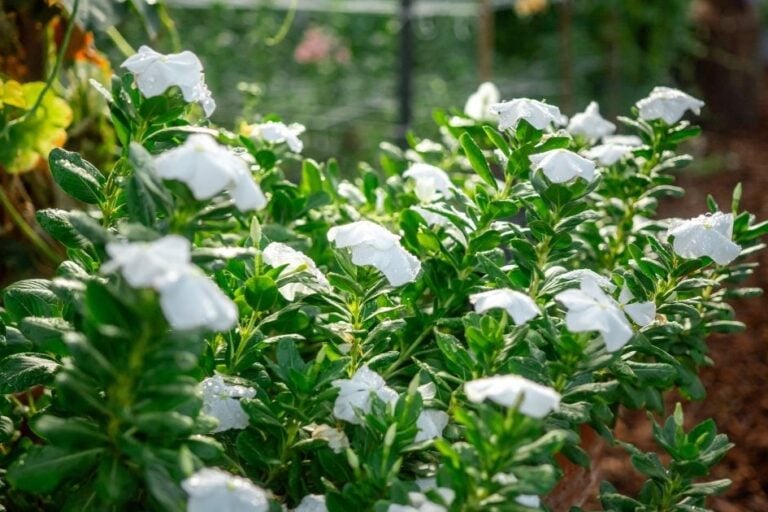




I love this post! Thanks for the great photos and information. I’m going to give some of these heat loving flowers a spot in my garden.
Thanks Kristin! I”m so glad it was helpful. Thanks for reading and commenting!
How will these plants do in SWFlorida? Hot, humid, rainy, summer.
Good question. My experience is with the drier heat of Arizona. These plants can take the heat and I imagine most would welcome the added moisture and humidity. Take note during the summer of flowers that do well in your area in other yards and businesses, start there. You may want to give the flowers I’ve mentioned a try. Annuals are an inexpensive way to experiment and add color in your landscape.
@Angela Judd, a tadd FYI for the FL gardener 🙂 I hope you’re okay Angela, w a contribution 🙂 It’s the teacher/researcher in me who always wants to be helpful :):):)
1. I often contact the LSU University Agriculture Dept for info on my area in LA.
2. Since some of my children will be relocating me to their area in the FL Panhandle, I already contacted the FL State Ag Center w questions re: what I can bring into the state, and they have been most helpful.
3. There’s also a Central FL you-tube Gardener who seems to be knowledgeable as Angela about gardening in her area. Her YT Channel is The Urban Harvest Homegrown Education. She’s an educated-professional-gentle style like Angela.
4. My next FL contact will be the Gainesville state University Ag Dept.
Many Blessings y’all………………….
Wonderful, thanks for sharing!
I have grown most of these flowers here in very sunny, ho, humid SE Florida and they do well. I would also add marigolds as they are doing nicely right now and giving me tons of extra seeds to replant and share. I have added Blue Daze this year to see how it lasts during the summer. It makes a colorful border flower and can grow wide to cover a lot of ground. Seems to prefer lots of sun.
Thank you for responding. I’m glad to hear the flowers do well in Florida. My marigolds do well here until the hottest parts of summer, they bounce back in the fall. I love blue daze as well. Thanks!
My zinnias are being completely destroyed by something despite my spraying with sevin. Something is eating on the leaves and they turn brown, swivel up and die. What do you suggest?
I am in Hilton Head Island, SC.
Thanks!
For insect issues, pinch off affected leaves and stem and remove the affected foliage to prevent the pests from spreading. Clear debris (such as leaves and spent blooms) from under plants, they can provide a hiding place for pests. Watering zinnias at ground level not at the leaves, allowing enough space between plants and watering early in the day are all essential for preventing common zinnia issues such as Alternaria leaf spot, bacterial leaf spot, and powdery mildew.
Hi Angela,
I live in south west Utah. Our weather is a lot like yours. Thanks for the great advice. Do you know of a flower that will grow well in morning shade and afternoon sun?
Thanks!
Sunflowers, Vinca and Angelonia would all be fine.
Found good suggestions for summer color and beauty.
I love your post especially since I live in Scottsdale, Arizona. I was going to plant lavender and marigolds in the spring but was delayed. Is there any flowering plants that I can start growing now in June with 100 degree days that will survive? Both my front and back yard have a lot of sun all day
Many thanks!
Sharon
The flowers I’m still planting now are zinnias, gomphrena, vinca and sunflowers.